Chum Valley : A Detail Description
Chum Valley
Chum -valley The 2,400-kilometer-long Himalayan mountain range, which stretches from Bhutan, China, India and Nepal to Pakistan, has been cut apart by glaciers flowing from north to south.
The people of Nepal used to reach China via Tibet through this deep mountain pass. People from Uttara used to come here through the same route.
The man-made settlements along the way are beautiful and pleasant. One of them is chum Valley.
After crossing the Marsyangdi Bridge from Mugling towards Pokhara, you can see Setamme Himachuchura in the north. Until you reach Pokhara, this scene seen while traveling about 90 kilometers on the Prithvi Highway continues to captivate the mind.
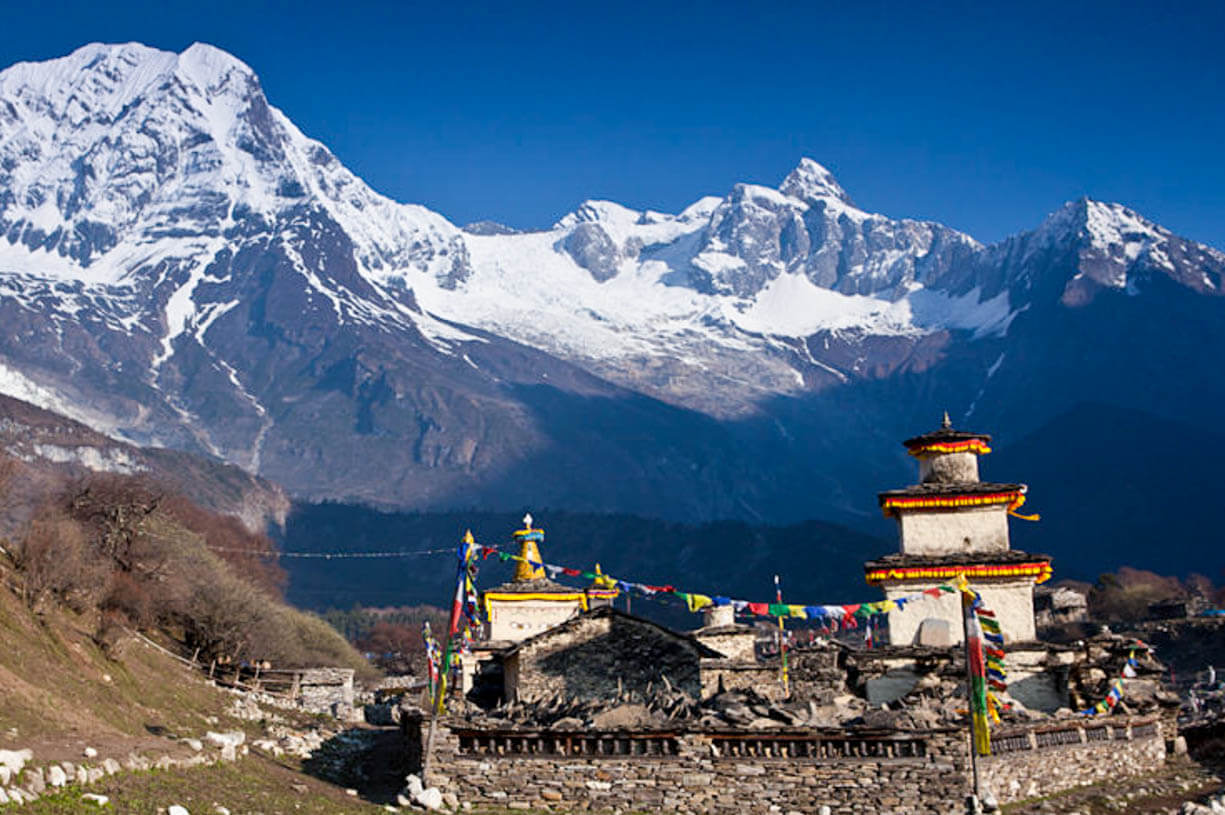
chum valley
If you have reached Bandipur, you must have seen this mountain range shining like gold in the morning.
Manaslu is the name of a mountain range that seems to steal the heart like this. you can see Setamme Himachuchura in the north.”
Until you reach Pokhara, this scene seen while traveling about 90 kilometers on the Prithvi Highway continues to captivate the mind.
If you have reached Bandipur, you must have seen this mountain range shining like gold in the morning. chum valley .
Manaslu is the name of a mountain range that seems to steal the heart like this.
This Manaslu mountain range is separated by the rivers Budhigandaki and Marsyangdi. chum valley.
You may be surprised to know that Nepal is also across this mountain range. Yes, beyond that, there are two mountain valleys with about two dozen villages. All of them fall in the northern region of Gorkha district.If the people of these villages had to go south, they would fall into the gorge of Budhigandaki.
The villages inhabited by the Bhote community of Tibetan origin are connected to Tibet through the Himalayan Bhanjyangs including Taple, Lajung and Larke. These ports, which are open for only six months of the year, are frozen in winter in chum valley.
There are a dozen villages including Samagaun and Samdo right behind Manaslu. Behind the Buddhist mountains to the east is the chum Valley. When you look at a map of Nepal, you will see the northern part of Gorkha district pushed towards Tibet. Yes, that’s where this chum valley belongs. There are a dozen villages including Chhekampar, Nile, Chule and this place is full of mysteries.
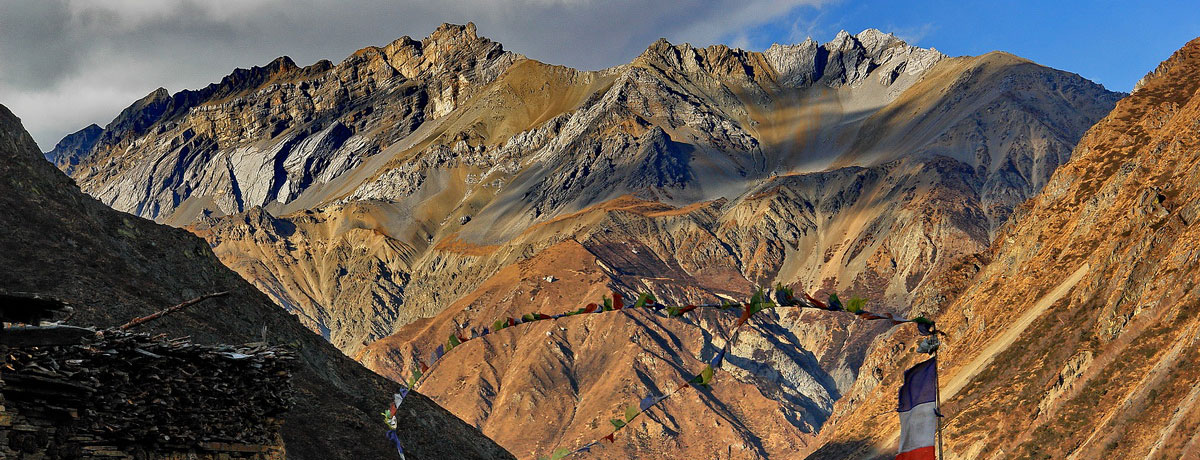
chum valley
Few people in life experience this joy.
Surprised by nature and Buddhist tradition, these destinations have become known as attractive destinations among foreign tourists in recent years.
The Manaslu Circuit and the chum Valley, two different trekking routes, are major attractions in the area. Those who want to explore adventure and risk choose the Manaslu Circuit, while those who want to enjoy the mountain lifestyle, Buddhist tradition and beautiful mountain scenery prefer to travel to chum Valley.Some hikers travel simultaneously to both chum Valley and Manaslu Circuit. chum valley .
Trekkers in the Manaslu area mainly climb the Arughat of Gorkha to the north of Budhigandaki. From Eklebhatti, those who go to the chum Valley head north along the Siyar River.
Those who go to Manaslu Circuit follow the Budhigandaki River to the northwest and ascend to Samagaun. This road goes through Samdo, Dharamshala, passing through the 5,125-meter-high Larke Bhanyang, passing through Bhintagam, Kharche, Bhirche and reaching Bensishahar. chum valley.
A few hikers cross the Gorkha Barpak and cross the Rupinala Bhanjyang to the east of the Buddha Himal to complete the chum Upatyaka or Manaslu circuit. However, when traveling on this route, you have to camp for two or three days, so you have to prepare accordingly.
Let’s travel to chum Valley this time. Now the season is also suitable.
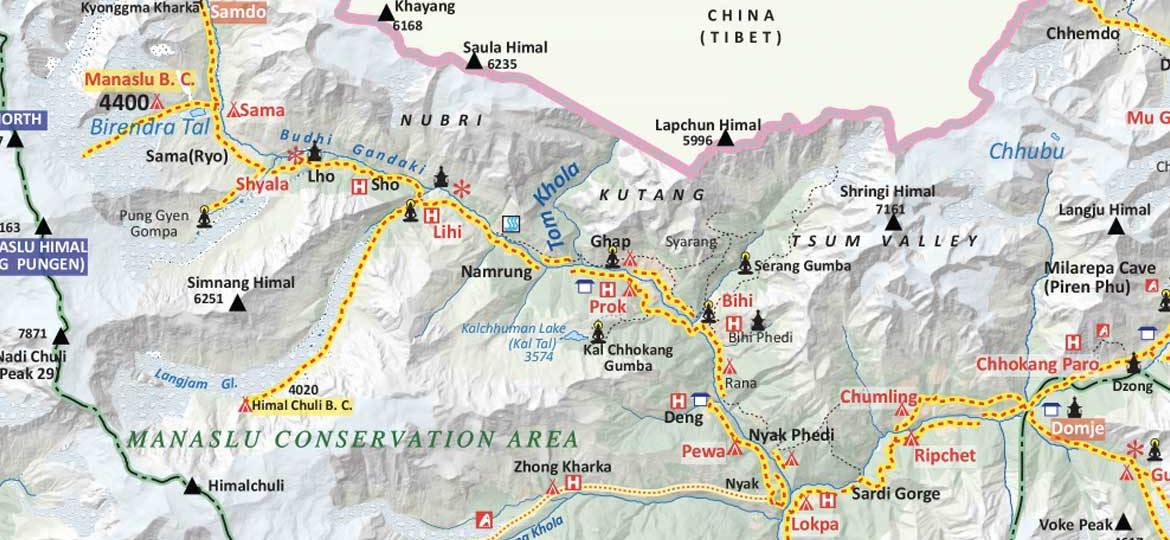
chum valley
If you walk at a speed of 7 to 10 hours a day, this journey can be completed in at least 10 days. Foreign hikers complete the journey in 15 to 16 days.
Let’s start the journey of chum valley from Kathmandu with the stopped monsoon.
The beginning of the journey
There is a regular bus service from Kathmandu to Dhading and Gorkha border market Arughat via Dhading Basin. From there it takes one to one and a half hours to reach Soti by local bus and jeep.
If it is winter time, you can drive to Machha Khola, which is a day’s walk away. The road above Sotikhola is difficult as the rains have not stopped yet. So people like to walk from here.
There are some hotels and lodges along the Soti river, as well as camping sites. From here, you can get information about the bag you are carrying, the essentials, the porter and the condition of the road ahead.
The second day
It is better to have breakfast and walk as fast as possible. Now the road is to go over the edge of Budhigandaki. The rains have not stopped yet and the road is getting wet due to the cold at night. Otherwise, the fear of slipping and falling into old age due to even a small mistake will remain throughout the journey.
After walking from Soti, you reach Lapubensi for breakfast. Khorlabensi is suitable for overnight stays. Since you have to walk through the gorge of Kholaikhola, you can’t find a few days to observe the beautiful hill view.
As you follow the steep slopes along the steep slopes of Budhigandaki, you will find steep, stone-paved sidewalks on the left and right sides of the road. Those roads were to go to Laprak, Gumda, Barpak or Mazhagaun, Dorba, Kashigaun and Kerauja.
After walking for three or four hours from Lapubensi, you reach Machakhola. There are hotels and camping places to stay.
It can cost 150 to 200 rupees to eat dal rice and 500 to 1000 rupees for sleeping. If you want to sleep in a group, you can get a bed with a bed for only 100 rupees.
If you walk another hour from Machha Khola, you will find another market, which is called Khorla Besi. The main village of Khorla is found an hour’s drive west from here.
As it is the first day of the journey, tonight is a good time to stay in Khorla Basin. The road leading to Khorla Besi is considered to be a little more risky. This section of road is very slippery during the rainy season as it protrudes from the river bank, so that even people from horses to mules are missing in Budhigandaki.
The third day
After an hour’s walk from Khorlabesi, you reach Tatopani. Pedestrians stop here for an hour and a half to bathe in hot water, as there are some hotels and hot springs along the way.
The next step is to cross the suspension bridge over Budhigandaki and proceed on the right bank of the river. The front reaches Dobhan. From here, after crossing a steep hill, you reach Yarukhola. After proceeding further from Yarukhola, cross the Budhigandaki suspension bridge and proceed on the left bank.
Tonight is a good time to rest in the world. Jagat is a small market located at an altitude of 1660 meters. As it is also the office of Manaslu Conservation Area, only foreign tourists who have trekking permission can go ahead of here.
Forth Day
Moving forward from the world, the road continues on a steep slope like before, on the banks of a river, sometimes on a cliff and sometimes on a buggy.
After crossing Salleri, Sirdibas and Ghatte rivers and crossing the high suspension bridge over Budhigandaki for half an hour, you reach the pleasant Lekali Gurung village. The name is – Film.
As beautiful as the name suggests, this village is very beautiful. Film is a major market in the region. Schools, health facilities, shops, hotels are all here. We still have to go upstairs from here. Tomorrow is the day to kiss the valley.
For that, today we have to go to Eklebhatti or Lokpa and stay there. .
The fifth day
After an hour’s drive from Eklebhatti, the road splits in two directions. If you follow Budhigandaki to the northwest, you will reach Samake, Samdo and Larke, i.e. Manaslu Circuit. However, we continue north along the Siyar River, which flows through the chum Valley.
The most difficult and steepest part of the journey now begins. The road is steep and narrow all day long. This is where the chum valley region begins. Today, if we walk a little harder, we can reach chum ling village for lunch.
chum -ling is the first village of the Sherpa community of Tibetan origin to be found during our trip. Attractive house made of stone, Chumling looks delightful with the crops ripening all around. From here, there is a breathtaking view of the Siringi Himal.
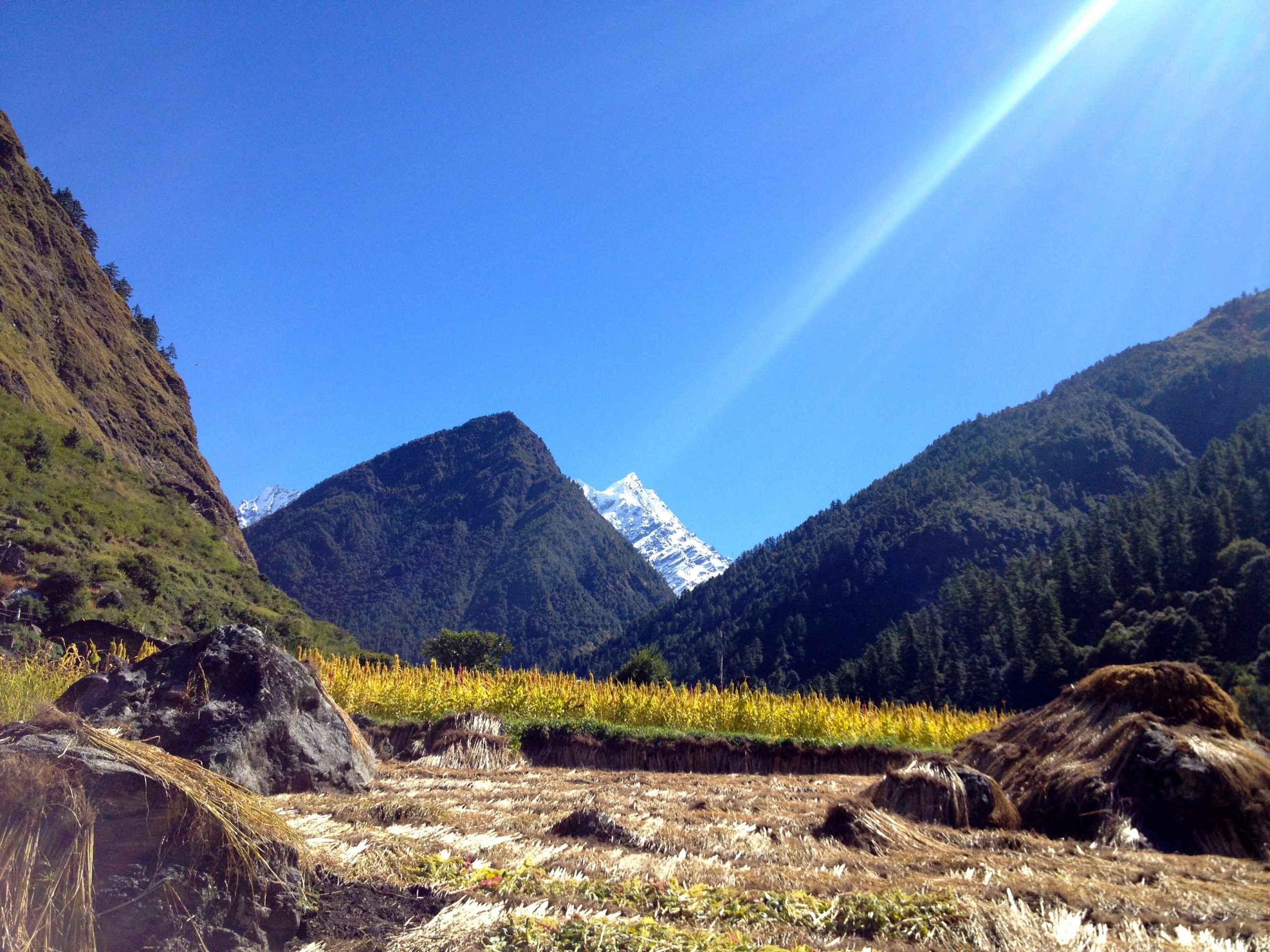
chum valley
If you walk for three hours from Chumling, you will reach Chhekampar in the evening. Considered to be the largest village in the chum Valley, hotels, lodges and homestays abound here. There is also a border police post here as the Taple Naka (5104 m) entering Tibet is the same route.
The real Chum Valley can be experienced from Chhekampar. Artistic houses made of stone, attractive monasteries, thousands of Mane and Chhorten all around and the mountain lap adorned with nature.
Wow! Our country.
The sixth day
Now, from the north to the south, we begin to walk down the steep Himalayan valley.
Looking south from Chhekampar, we can always see the northern face of Himalchuli and Buddhist Himal to the north and the 7,140 meter high Ganesh Himal to the east. On the way forward, Naur, Himali Thar, Ghoral are found everywhere along the way. Herds of yaks and thieves block the walkway. chum valley .
We now head north at the foot of the Himalayan peak to the west of Ganesh Himal. A wide field, deep in the field, Mane, Chhorten, Gumba, the famous Richen Gumba can be seen across the river. On the way through Lamabgar, you will find a huge Buddhist stupa, which is called Chule Stupa. chum valley.
The road is easy from Chhekampar. Slightly uphill, river and farm dilapidated walk. After crossing the Chule village and crossing the narrow bridge, you come to a small village on the river bank in chum valley.
Blue (3361 m), the last human settlement on our journey. This is the last village of chum valley Above it is valley only the famous Mu Gumba, considered to be the center of faith in the region.
Blue has simple hotels, lodges and camping sites. This place is a bit colder than other places as it is covered with mountains all around chum valley
The seventh day
Now we are at the end of the journey. of chum valley
After a two-hour walk north from Nile, you reach Mu Gumba. From an altitude of 3,700 meters, one can see the beautiful scenery all around. If you walk further north through Mu Gumba, you will reach the Nepal-Tibet border. However, since there is no human settlement above the monastery, tourists often return from the monastery. Pedestrians return to the nearby Rikang, Dhefudo, observing the monasteries in chum valley .
On the way back, looking at the peaks of western Mohoda of Ganesh Himal, it is a good place to stay for the night. From here, we return to the other side of the river, namely Rechen Gumba, Tumje, Ripchet, instead of the road we had crossed the day before. chum valley
The eighth day
Now it’s time to go back. We can reach Ripchet for breakfast by going downhill road. From there, we can go to Ekle Bhatti and stay in the movie in the evening.chum valley .
The ninth day
After walking from the movie in the morning, you can reach Machha Khola to spend the night through Sirdibas Jagat. chum valley .
Tenth day
Sleep can be reached in four hours by walking from Machha river in the morning. From Soti, Kathmandu can be reached by local train in the evening. chum valley .
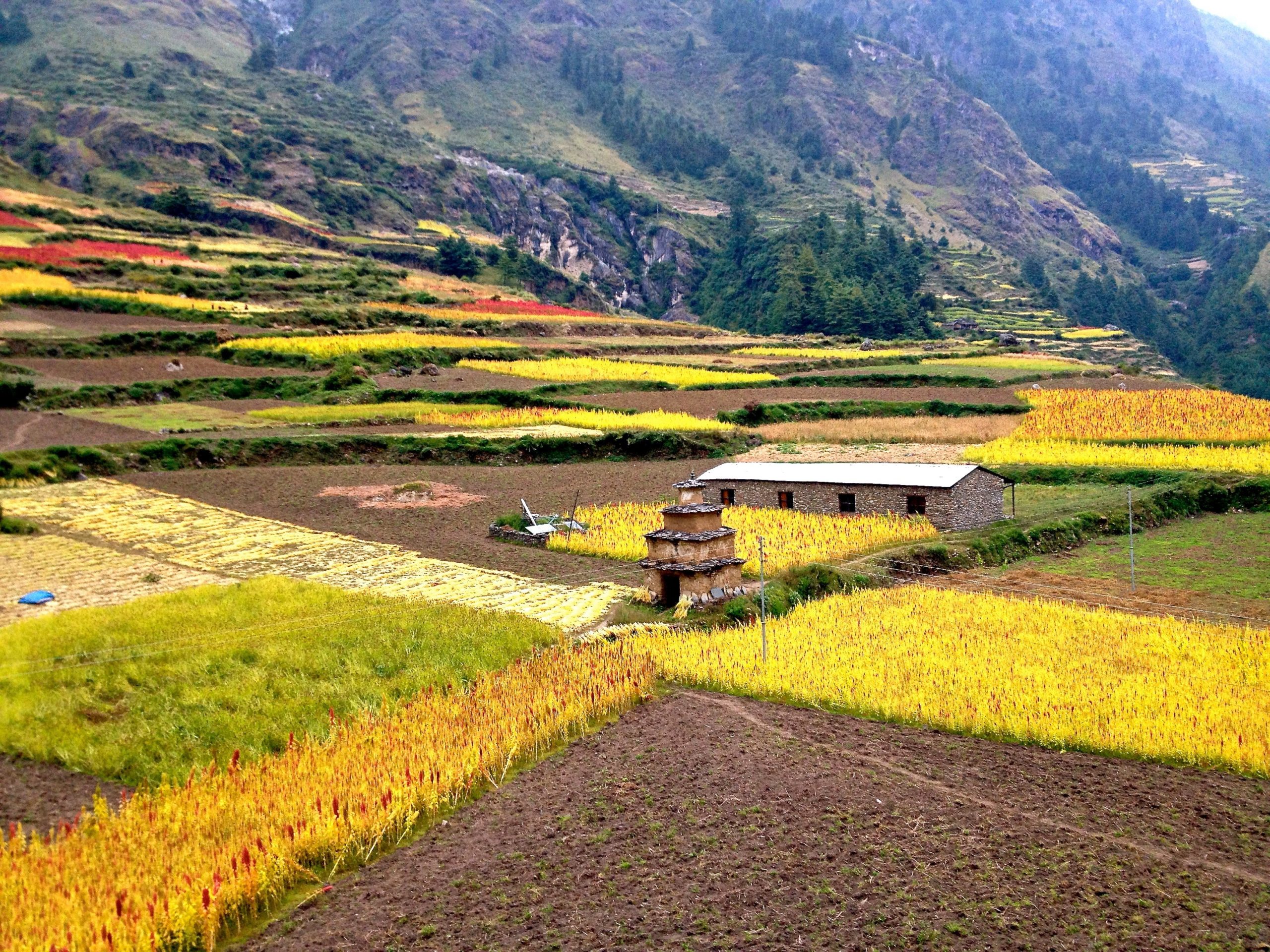
chum valley
Estimated Cost: Two thousand per day (per capita)
Kathmandu-Soti-Kathmandu Motor Fare: Two Thousand (Per Capita)
Materials Required:
Trekking boots
Socks: 3-4 thrusts
Down jacket
Sweater or windshield
Wool shirt
Half point, point,
T-shirt
Slippers
Umbrella or raincoat
Sun cap
Rucksack bag
Sleeping bag
Water bottle
Sunscreen cream
Torch
Gloves
Camera
Medical first aid kit
Swiss Knife
Sunglasses etc.
FAQ’S
Where is chum valley ?
Tsum or chum valley?
How to reach chum valley?
Comment Here!